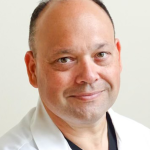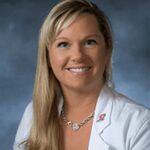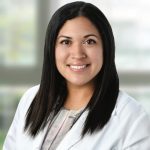
October 3-6, 2023
San Antonio, TX CME Conference
Credit Information
Earn up to 28.5 CME credits and 2.0 APRN Pharmacology credits at this CME Conference. This activity is approved for ACCME, AMA, ANCC, APRN and AAPA credit. Please see CME Credit Information for details.
Bonuses!
- In-person registration includes FREE virtual access during the conference; watch sessions from your hotel room, poolside, or wherever there’s a WiFi connection. Just bring your personal device!
- Receive a $100 rebate check by booking your guest room at our host hotel! View our rebate details here for further information. To make reservations, please call 210-226-9000 and reference group code: DMG or click here.
Daily Schedule anchor
Daily Schedule For San Antonio, TX CME Conference
Whether you practice full-time and strive to sharpen your skills, or you work occasionally and need to improve your knowledge base, there’s something for everyone here! Perhaps you just want to stay current and pass your recertification exams. Plus, this exciting program allows participants to come early and/or stay over the weekend for a vacation. Discounted hotel rates apply! Schedule is preliminary.
Topics, times and presenters subject to change.
APRN Pharm Credit to be updated
Product Theater (Non-CME) denoted by *
*Number of hours depends on your course selection. Rx denotes Pharmacology hours. Daily CME credits listed are the maximum number of credits available for that specific day.
Monday, October 2 – Early Registration 2:00 – 5:00 pm
- October 3
Day 1 – Tuesday
Dermatology - October 4
Day 2 – Wednesday
Orthopedics - October 5
Day 3 – Thursday
Cardiology & Emergency Medicine - October 6
Day 4 – Friday
Women’s Health
7:30 – 8:30 AM
Rise, Shine & Learn Sponsored by Novo Nordisk
8:30 – 9:30 AM
“We’re Number One!” Skin Cancer: Best Practices in Diagnosing and Treatment (Rx=0.25)
More people are diagnosed with skin cancer each year than all other cancers combined, with 20% of all Americans experiencing skin cancer by age 70 and nearly three deaths an hour. While highly curable in the early stages, the death rate of non-melanoma skin cancers continues to climb. In addition, the diagnosis and treatment increased by 77% between 1994 and 2014 and almost an epidemic in 2021. Consequently, all providers across every specialty must be especially tuned to understanding the basic facts of this expensive and disfiguring healthcare crisis. The presentation will identify and prevent the most common skin cancers, where they are most likely to be located, and procedures one must gain to address once suspicion is aroused.
9:30 – 9:45 AM
Break
9:45 – 11:15 AM
“Take Me Out to the Emergency Room.” Sports Dermatology (Rx=0.25)
On any given day, 20% of Americans aged 15 years or older participate in some exercise and sport. Invariably, superficial injuries, contusions, infections, and open skin wounds make up most sports- and recreation-related injuries presenting to a PCP. Jogger’s nipples, dermatitis from rosin, friction blisters, sunburns, turf toe, fungal and bacterial infections, green hair from chlorine, and even sea bather’s eruptions are among the many topics that will be covered in this fast-paced, well-illustrated lecture providing tips on diagnosis and straightforward treatment paradigms.
11:15 AM – 12:30 PM
Lunch & Learn Sponsored by AstraZeneca or Lunch on Your Own
12:30 – 2:00 PM
“FUNdamentals of the Oldest Specialty”: A Dermatology Primer: Learning to Assess, Diagnose and Make Sense of Common Conditions and Lesions
The study of dermatology is often considered one of the most difficult specialties. As the largest body organ, it suffers nearly 3,000 diseases, and disorders – more than any other medical arena –, and providers tend to shy away from a thorough study. Together, we will build a framework to increase confidence in identifying and treating the bulk of the most common conditions and lesions of our clients, provide basic insight instruction in the work of dermatology, with important insight for expanding our knowledge base.
2:00 – 2:15 PM
Break
2:15 – 3:45 PM
“Do It for the Children”: Pediatric Dermatology (Rx=0.25)
Treating children and teens present with many challenges: dosing is often confused with adults; few clinical trials in children; off-label use is prevalent; hepatic and renal clearances vary; the adverse effects panel is much broader, and generally, the younger the child, the less communicative or cooperative. So, what to do with the strange moles, new warts, obvious hair loss, chipped nails, dry skin, blistering acne, flaky scalp, sweating palms, and armpit cysts? Join us to explore this overview of common and frustrating conditions made simple and straightforward.
3:45 – 4:45 PM
“When Candles Cost More Than Cake”: Dermatology in the Older Adult Population (Rx=0.25)
Americans 65 and older are the fastest-growing age demographic and poised to become the largest segment of American society in only a few years. This group presents with very specific needs and care, particularly with issues of skin, which must maintain its’ health and vitality through these important years. Drug eruptions, atopy, psoriasis, stasis dermatitis, intertrigo, rosacea, xerosis, maddening pruritus, and stubborn seborrheic dermatitis are only a few of the challenges. Our presentation will discuss prevention strategies, highlight risk factors and deliver solid, proven evidence-based interventions.
7:30 – 8:30 AM
Rise, Shine & Learn Sponsored by Novo Nordisk
8:30 – 9:30 AM
I Am Not Spineless
This session will focus on an all-too-common problem, low back pain. A short introduction to the anatomy will take us into the commonly seen complaints in urgent care and PCP offices. Next, we will review and understand red flags and pathologic reflexes that would alert the clinician for a prompt referral. A brief review of the treatment options will also be discussed. Video clips, X-ray, MRI, and CT imaging will be used to help demonstrate pathology. This presentation will help remove some of the fear and uncertainty of low back pain.
9:30 – 9:45 AM
Break
9:45 – 11:15 AM
The Pain in My Neck Is Not From the In-Laws
This session will focus on non-traumatic neck pain and cervical radiculopathy. The participants will learn various exam techniques through video and a strong understanding of the neurologic anatomy associated with neck complaints. Specialized testing for cervical myelopathy will be addressed as well as a physical exam for the non-trauma neck pain patient. A brief review of the treatment modalities and radiographic findings will also be demonstrated. This presentation will assist the clinician in understanding urgent from routine pathology.
11:15 AM – 12:30 PM
Sponsored Lunch or Lunch on Your Own
12:30 – 2:00 PM
AM I Think I Broke My Rotary Cup!
This session will address a widespread problem for many generations of patients, shoulder pain. Contrary to many patients’ beliefs, there are numerous pathologies that can affect the shoulder besides rotator cuff injuries. This presentation will assist the clinician in understanding common presentations for shoulder pain with a strong emphasis on physical exam techniques. The exam techniques will better allow the provider to understand the pathology of the complex shoulder joint. Numerous videos will be used in this presentation to teach many of the commonly used specialized shoulder examination tests and what they may imply.
2:00 – 2:15 PM
Break
2:15 – 3:45 PM
CXR for the PCP…Do You See What I See?
Chest X-ray (CXR) is the most ordered radiologic diagnostic, yet it can be one of the most complex to understand. CXR combines organs, bones, soft tissue and comprises innumerable pathology of the cardiac, pulmonary, and gastric systems, to name a few. This presentation will break down CXR interpretation by first reviewing what is expected. Then, multiple diagramed studies will be used, and typical findings related to asthma, COPD, cardiomegaly, infiltrates, Covid, CHF, & pneumothorax. Finally, case studies will be used to enhance the learning process.
3:45 – 4:45 PM
At Least It Is Only Fractured & Not Broken
This session will be a “smorgasbord” of radiologic case studies. Numerous cases from a local emergency department will be reviewed, covering the common and not-so-common osseous diagnosis and treatment options. Topics will also include commonly diagnosed fractures, dislocations, and soft tissue abnormalities diagnosed with plain radiographs. This will be a fun participant interaction presentation.
6:30 – 8:00 AM
Registration & Breakfast
7:30 – 8:30 AM
EKG 123: A Basic Review
This session will focus on the “10 Step System” to reading an EKG, contagious and reciprocal changes. We will discuss the intervals on the 12 lead and how they help you make your diagnosis. In addition, we will review the segments and the waves of the EKG and compare and contrast a normal EKG against an ischemic EKG.
8:30 – 9:30 AM
Cardiac Cocktails: Are We the New Bartenders? (Rx=0.50)
• AF “cocktails” and treatment strategies
• The Heart Failure “Martini” and how to adjust to taste
• The “Cardiac Happy Meal” – post-STEMI treatment regimen
• Common side effects of cardiac medications and how to spot them
Participants will learn strategies to combat AF and use the CHADS score to define risk.
CHF recipes will be discussed on how to adjust/maximize diuretics and how the new novel agents may play a role in treating CHF. We will also discuss the role of the “Cardiac Happy Meal” and tailor the medications to prevent side effects. Finally, a case-based review of some of the more common side effects of cardiac medications and how to identify them will be discussed.
9:30 – 9:45 AM
Break
9:45 – 11:15 AM
Common Cardiology Complaints and How to Work Them Up
In this presentation, we will review specific questions to ask a patient who has palpitations, what findings you must look for every time, what tests to order on a chest pain patient, and what differentials to consider on someone who is dyspneic.
11:15 AM – 12:30 PM
Sponsored Lunch or Lunch on Your Own
12:30 – 2:00 PM
Cardiac Murmurs – Whispers of the Heart
We will review murmur terminology, grading, and the five murmurs that you cannot afford to miss. This presentation will be presented in a case-based fashion.
2:00 – 2:15 PM
Break
2:15 – 3:45 PM
How Much Should I Worry About This EKG?
Real EKGS and cases will be reviewed. This lecture is a “Can’t-Miss” topic if you do sports physicals! We will cover the five findings that could have very different outcomes, including Brugadas Syndrome and Hypertrophic cardiomyopathy. We will also discuss the EKG Findings associated with each of these high-risk findings and the findings to spot that the machine will miss!
OPTIONAL WORKSHOP
4:00 – 6:30 PM
Hands-On EKG Workshop + $99
In this 2.5 hours hands-on course, we will cover all these things and more! We will discuss reciprocal changes and contiguous leads. You will get a chance to draw them on your sample EKG and make it into a cheat sheet you can use in the clinic. You will go hands-on in your workbook with 17 EKGs in class using pattern recognition to spot the high-risk findings. This hands-on approach helps you “put it all together” finally. If you feel overwhelmed by all the things we have to know but don’t know where to start, this is a quick condensed course that only focuses on the high-risk findings you need to know to be a safe provider.
This is a hands-on workshop. If you register for the in-person conference & workshop, you must attend the workshop in-person.
6:30 – 8:00 AM
Registration & Breakfast
7:30 – 8:30 AM
The Ins and Outs of the H-P-O Axis (Hypothalamic-Pituitary-Ovarian)
In this session, the discussion of hormonal control of the menstrual cycle will be presented. We will also review the hypothalamus to the reproductive organs. In addition, you will learn what happens when things go awry and its implications on fertility quality of life. We will also review the treatments for amenorrhea, anovulation, polycystic ovarian syndrome, and others. Most importantly, patient education techniques will provide an easy tool for your patients and staff. You will understand the normal menstrual cycle and all its distorted presentations.
8:30 – 9:30 AM
Abnormal Uterine Bleeding (AUB) in the Reproductive Age (Rx=0.25)
In this session, we will explore irregular menstrual bleeding. This is a common concern experienced by menstruating people and has many potential causes. We will review the oft-cited PALM-COEIN framework, which includes the most common causes, including structural and non-structural causes. There will be a brief review of the assessment process during the focused history and physical exam, that will quickly help to understand the benefits of laboratory and imaging tools. The initial management of the identified condition and available treatment options will also be shared.
9:30 – 9:45 AM
Break
9:45 – 11:15 AM
The Birthing Process
We were born for this, right? Other than pain, most people generally know very little about the process. Let’s review the physiology of pregnancy and its contributions to the birthing process, including critical hormones and adaptations. A dive in the past shows us prehistorical and ancient depictions of laboring women surrounded by supporting women. We aim to understand this connection, the advancement of maternal care, and tips and tricks for the best experience. We will also review deliveries in low-resource settings.
11:15 AM – 12:30 PM
Sponsored Lunch or Lunch on Your Own
12:30 – 2:00 PM
Optimizing the Postpartum Period for Primary Care (Rx=0.25)
In this session, we will review what should happen after birth. Historically, women will only follow up with their obstetrician for six weeks postpartum. With the high rate of maternal mortality, particularly in the postpartum period, it is important to identify the specific needs to provide appropriate care better. We will review the most common causes for maternal morbidity and mortality and potential medical complications in the future. Additionally, can the implementation of a postpartum handoff be of use? At your next visit with a mother, know how to best approach the obstetric history to optimize her health.
2:00 – 2:15 PM
Break
2:15 – 3:45 PM
Ovarian Overview
The mighty ovary will be reviewed in this session. We will explore its function from early life until menopause. Additionally, we will discuss the theories behind ovarian cancer formation and its relationship to the fallopian tubes. Ultimately, you will learn to assess ovarian pathology and the dysregulation of hormone synthesis. Next time you have a patient concerned about a corpus luteal cyst, it will be a breeze to explain.
Don’t Miss Out On Our Early Deal Specials!
The earlier you register, the more you save!
In-Person Conference
Super Saver
On/Before May 3
$927
Early Bird
On/Before June 3
$987
Advance
On/Before September 3
$1,037
Standard
After September 3
$1,057
Bonus!
In-person conferences include FREE virtual access!
Includes a FREE On-demand course by topic! Up to 13 CME hours – a $297 value!
Receive a $100 rebate check when you book 3 nights at our host hotel using our group code!
Virtual Conference Only
Super Saver
On/Before May 3
$727
Advance
On/Before September 3
$777
Standard
After September 3



